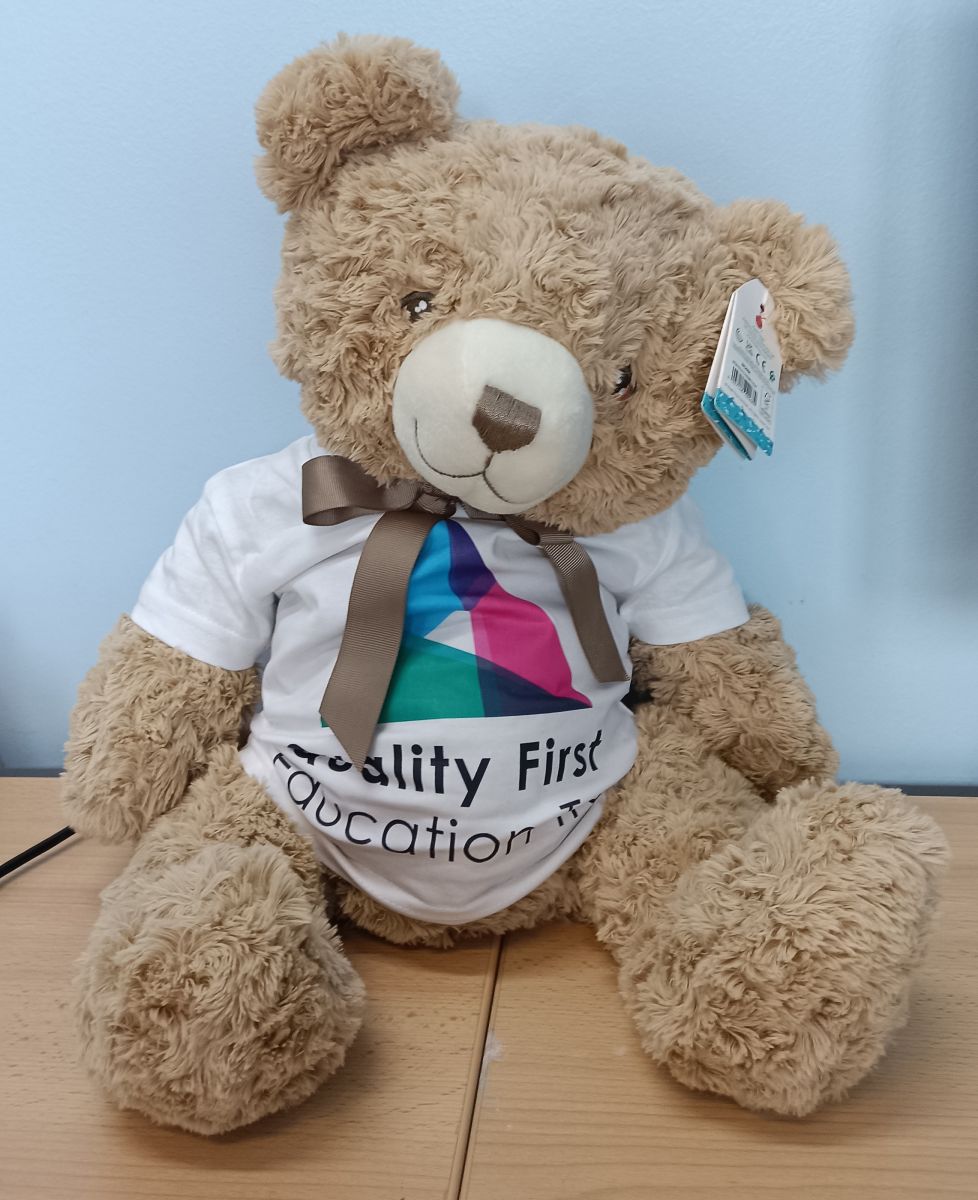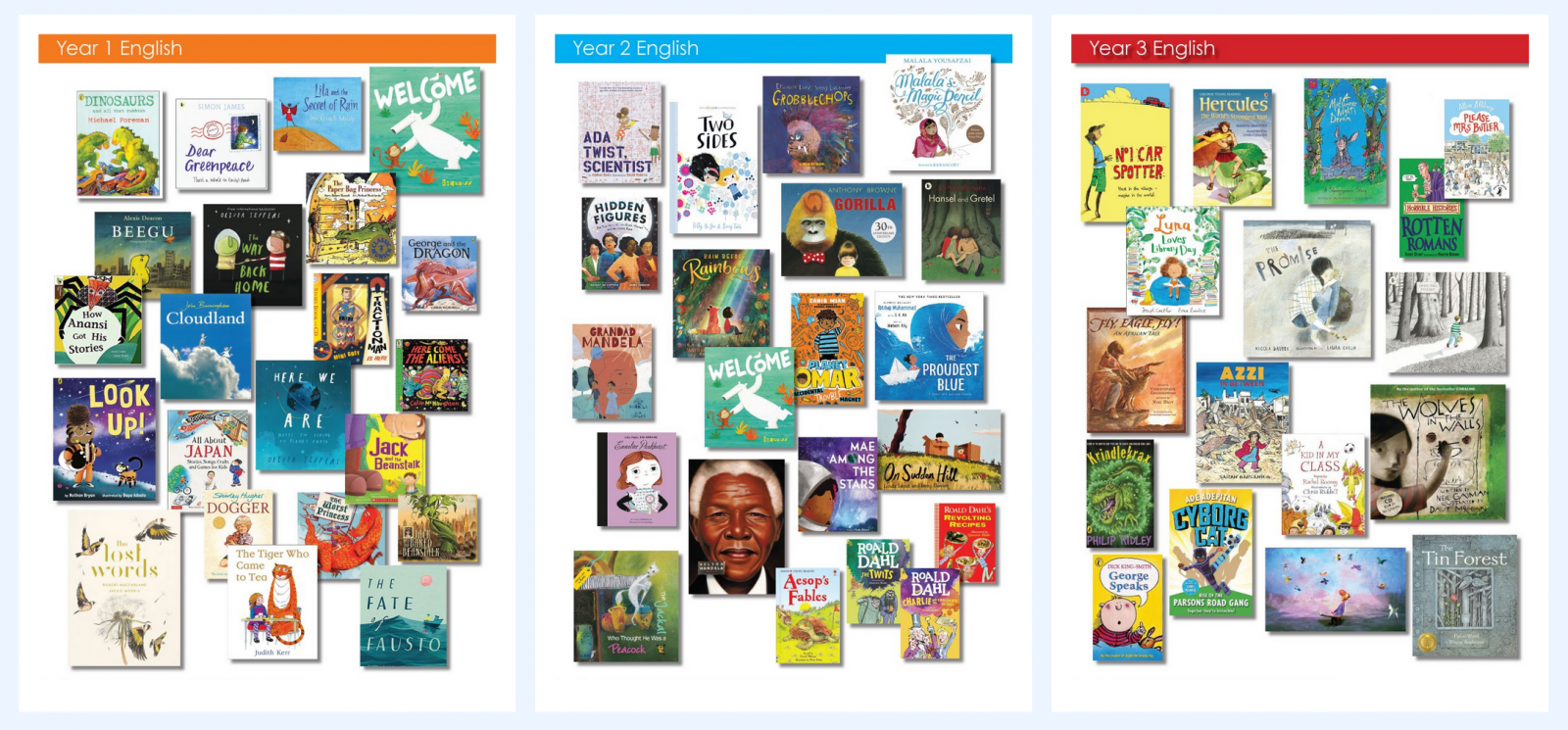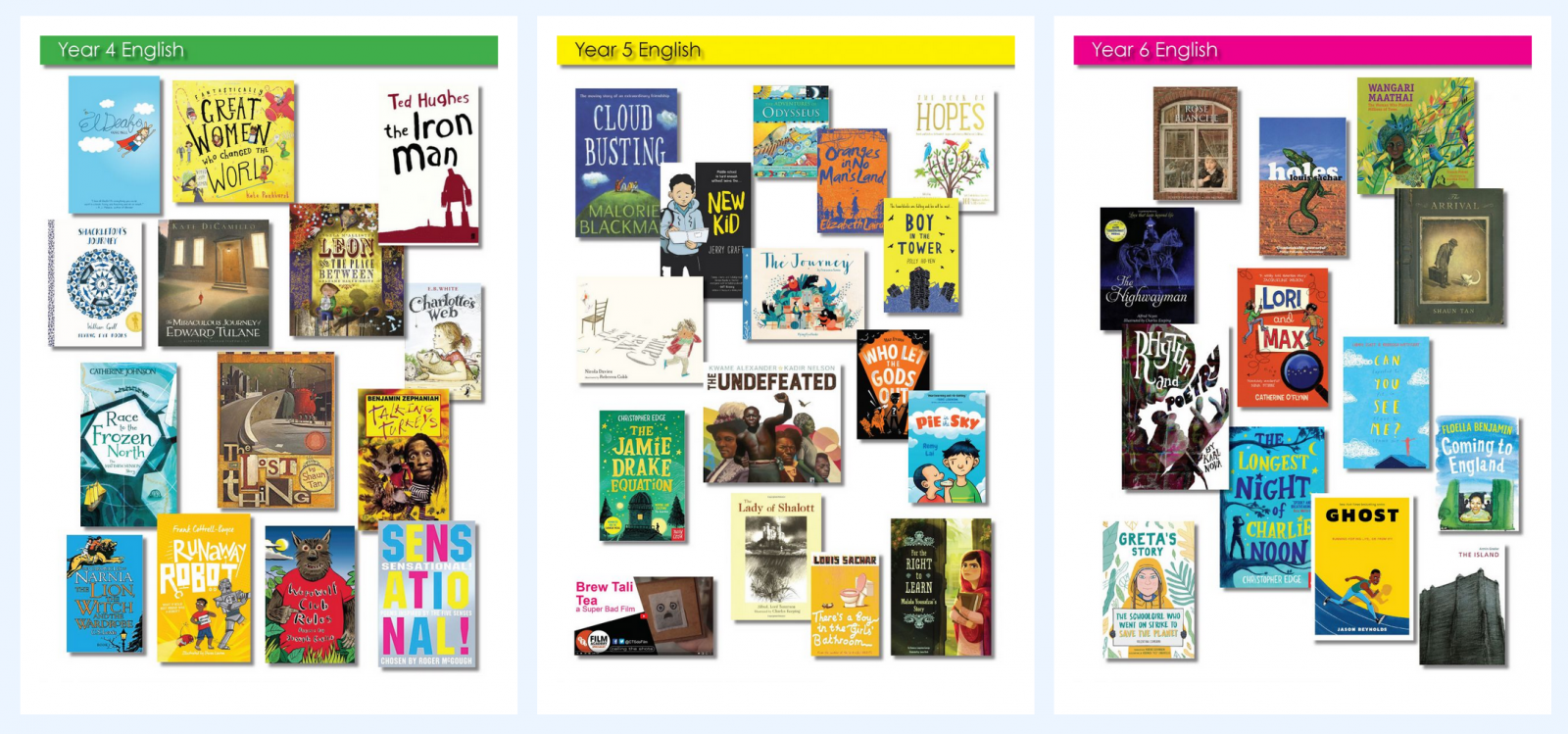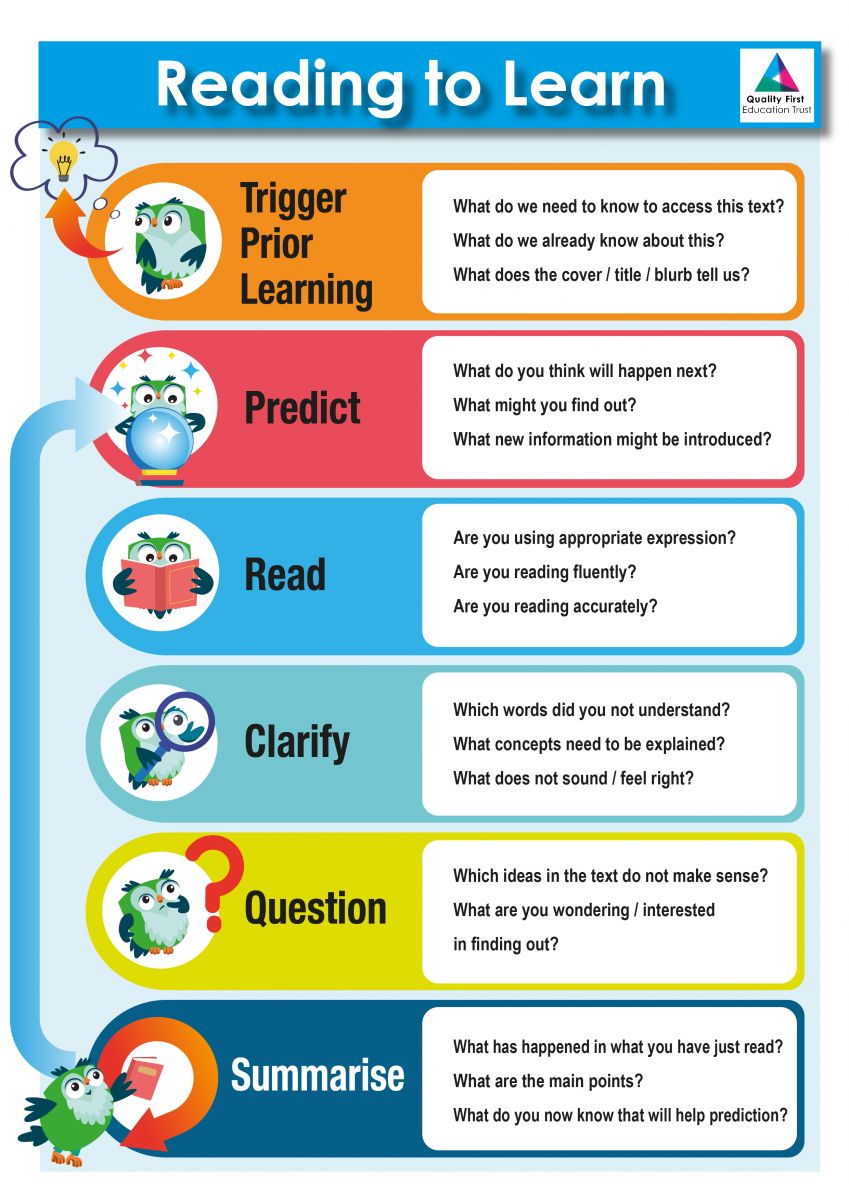‘Learning to read; reading to learn’
‘Learning to Read’ – Early Reading
Our ultimate aim in the teaching of early reading is for children to leave Year 2 fluent, confident and independent readers being able to apply their knowledge and skills across the curriculum. We place a great deal of importance and emphasis on the teaching of early reading. This is reflected in the amount of time dedicated to the teaching of knowledge and skills; we teach phonics daily in Early Years and Year 1 (see our phonics videos). With these key skills, children are in an excellent position to access the wider curriculum. The love and enjoyment for reading is reinforced in the rich, broad diet of texts to excite and challenge.
Phonics Programme – Nursery to Year 2
 We have developed a bespoke, systematic synthetic phonics programme of study based on ‘Letters and Sounds’ which incorporates symbols, songs, actions and resources from a variety of commercial programmes to best meet the needs of and promote engagement with reading for our children.
We have developed a bespoke, systematic synthetic phonics programme of study based on ‘Letters and Sounds’ which incorporates symbols, songs, actions and resources from a variety of commercial programmes to best meet the needs of and promote engagement with reading for our children.
Throughout our phonics programme we explicitly teach ‘Jolly Phonics’ actions to engage our learners. This we find particularly supports our EAL learners to cue into the sounds. In addition to this, we use Fred the Bear to reinforce the skills and knowledge. Fred is crucial to the teaching of Phonics. He is able to segment using pure sounds but is not able to blend the sounds, therefore encouraging 100% participation from the children and reinforcing the skill of blending.
In Nursery, children learn to identify environmental and percussive sounds with teaching of rhymes and songs to enable them to begin to make the distinction between different sounds in preparation for identifying Phase 2 sounds and phonemes by the end of the year.

In Reception, we explicitly teach the phonemes and corresponding graphemes through the daily teaching of our progressive and engaging phonics program of study. This begins very early into the term with discrete phonics teaching starting after baseline assessments have been completed . We expect children to leave Early Years with the knowledge of Phase 3 sounds.
As children move into Key Stage One the skills and knowledge are reinforced and built upon. Year 1 children are taught alternate graphemes to specific phonemes through explicit phonic lessons which take place everyday. We expect children to have a sound knowledge of Phase 4 and 5 sounds. Children move into Year 2 with a greater shift from learning to read at a basic skill level to reading to learn in the application of their knowledge. We expect children to leave Year 2 as confident, fluent readers with the knowledge of Phase 6 sounds.
Knowing that not all words are phonetically decodable, we teach children various strategies to read and spell Tricky words/Words to Learn. We have identified sets of words that children are expected to read and spell by the end of Reception, Year 1 and Year 2 in order for them to be successful readers and writers. This is part of our Phonics programme.
‘Reading to Learn’ – Understanding texts
‘The ultimate goal of reading is comprehension’
Comprehension is introduced from Nursery and Reception through our 4-strategies and 6-steps reading pedagogy, based on Reciprocal Reading, to enable ‘Reading to Learn’. As children become more fluent and automatic readers, the amount of time and focus on understanding increases.
Triggering Prior Knowledge
This prepares the reader for engaging with a text by:
- Summarising prior learning/concepts.
- Foregrounding new texts with an understanding of concepts or facts that will aid understanding of the reading to come.
Predict
Enabling the reader to anticipate what will come next in the text, based on:
- Prior knowledge
- Structure of the text
- Content of the text
- What has been read previously
Read
Children read independently at their own pace, either:
- Silently or to themselves
- Teachers can hear an individual read-aloud
- Reading can be done as a whole class
Clarify
Clarifying enables the learner to deal with difficulties of:
- Unfamiliar vocabulary – words/phrases
- New or challenging concepts
- Where meaning is lost
The best clarification comes from the children – some words seem obvious to teachers but that is irrelevant for a child to whom it is not obvious.
To establish meaning, we may re-read a sentence or passage now that the children understand the language.
Question
Children are encouraged to be active in the reading process by asking questions about the concepts and themes that they are intrigued or confused by.
- Teachers (and increasingly, the children themselves) ask questions about the text that they have just read.
- The teacher should invite different ideas and suggestions to questions.
- Comprehension of the text can be assessed through the questioning stage
Summarise
The summary identifies the main or most important point in the section that has been read:
- It gives an indication of the reader’s understanding.
- Encourages the reader to sift main ideas in own words.
- Sets up prediction for the next section where they will return to predicting.

Choosing appropriately pitched texts
Guided reading is our main vehicle for teaching ‘Learning to Read’. Texts are a mixture of various reading schemes and ‘real’ books. They are banded by difficulty using the Institute of Education Book Banding Guide and cross-referenced with the phases of ‘Letters and Sounds’.
We have also book banded the more difficult texts (beyond the typical band of Copper which would be the expected level for Year 3) according to text difficulty using book-length, Lexile® Scoring (word count, sentence length and word complexity) and the ‘Reading Plagues’ (archaic language; non-linear time sequences; narrative complexity; figurative/symbolic texts; and resistant texts).
We have books of varying difficulty available in class libraries and also for additional interventions e.g. low reading level/high-interest level text for older readers who need a simpler reading text but more mature content.
Texts used in English lessons or other subjects are predominantly pitched at the age expected level or slightly above as these are exemplars and are aspirational.

Structures for reading and their purpose
- Guided reading with the teacher – small group provision, matched to need
- Independent reading – reading choice of book from the library or home (guided for struggling readers)
- English lessons – reading model texts as exemplars and also direct teaching of how to write about your reading and answering comprehension questions
- Reading enrichment –teacher modelled reading of an engaging and ambitious text
- Reading intervention – small group or 1:1 practice of skills for learning to read and/or reading to learn
Phonics training
We deliver phonics training to parents/carers within the first few weeks of term in order for parents to support at home as well as training our parents to become volunteer readers and support in class.
Our training videos and teaching of the phonemes and ‘Jolly Phonics’ actions CAN BE FOUND HERE for parents and carers to refer to when supporting at home.
In order to ensure all staff to have the skills and knowledge to teach phonics and to ensure the consistent use of the sounds, actions and symbols to support phonemic awareness, all staff receive specific phonic training prior to starting with us, as well as ongoing phonic refreshers through the year. The teaching of phonics, regardless of which key stage teachers are in, is part of the three-week induction package for all our NQT’s.
‘Learning to Read’ – an additional/alternative to phonics
Phonics is the primary strategy for word reading. Other strategies are also taught to all children to build fluency (and as 15% of English words are not phonically decodable) – this also gives an alternative to phonics for those children who do not learn to read in this way.
Examples of strategies:
- Sight word flashcards
- Picture cues
- Skip and return
- If I know . . . sent, then I know . . . bent, went, tent, spent, scent
- Use your root words
- Words inside words
- Vowel sound switch (from long to short ‘a’ sound)
- Compound words
- Syllable rules
- Syllables contain only one vowel sound
- Vowel teams stay together
- R-controlled vowels stay together (ar, er, ir, or, ur)
- Syllable strategies:
- Divide after a prefix rewind
- Divide between two middle consonants pumpkin
- Divide before consonant –le rumble
- Divide after the consonant when the nearby vowel is short planet
- Divide before a suffix teacher
- Divide between double consonants furry
- Divide after a long vowel sound acorn pilot
- Divide between two compound words sunshine
- Sense check
‘Learning to Read’ - building fluency and accuracy
Fluent and accurate word reading (at letter, word, sentence and text level) reduced the cognitive load for children so they can focus on comprehending meaning. Fluency and accuracy are built through:
- Appropriately pitched text difficulty
- Hearing correct models
- Re-reading (after guidance and feedback)
- Echo reading – adult models reading a word or sentence, child repeats
- Pre-teaching – work out difficult words before reading (speed words)
- Precision response – missing pronouns, prefixes, suffixes, what/that


